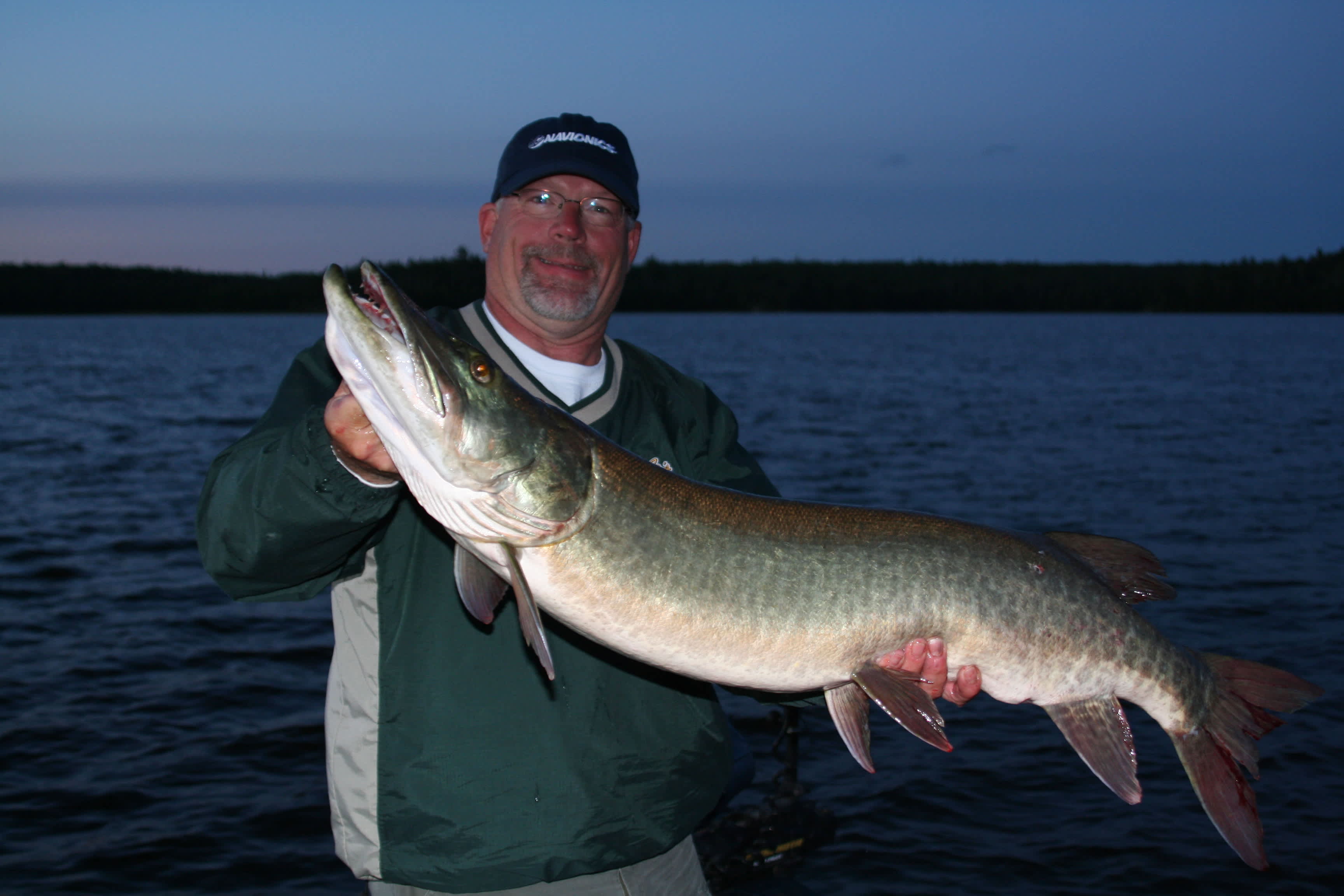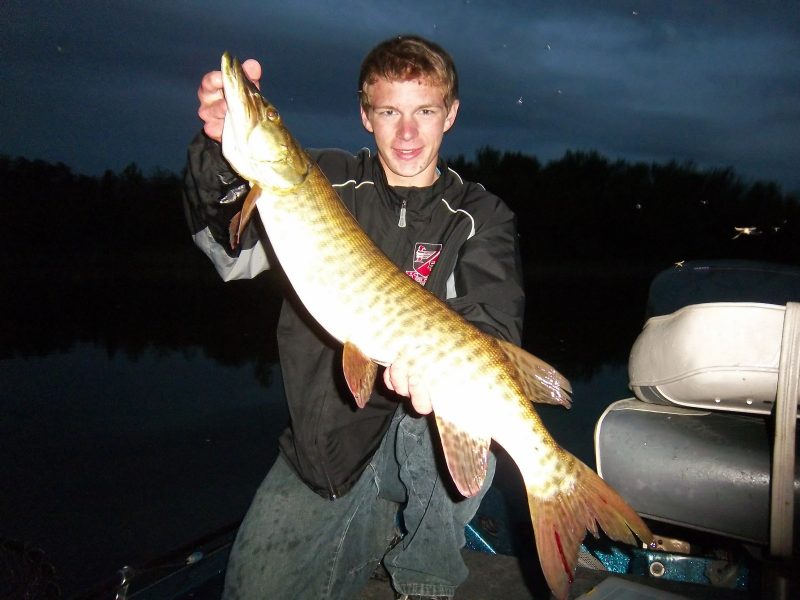Night-Shift Muskies
Bernie Barringer 07.26.16

My biggest muskie, 53 inches long and wide as a birch log, was caught 2 hours after dark. I am not alone in this; just ask a room full of serious muskie anglers and the ones who fish at night will have a story similar to mine. Big fish work the night shift.
Pressured waters are home to muskies that have seen it all, particularly those waters with a lot of traffic not just in anglers but in jet skis and pleasure boaters. The bigger muskies tend to become more active when the sun-seekers head for the cabin as the sun goes down. However, nighttime muskie fishing can be terrific on any body of water, pressured or not. Let’s have a look at how to best accomplish this difficult, but adrenaline-charged activity.
When to Go
Night fishing is best when the water is warm and the fish are most active. The late summer and early fall nights following a warm, humid day seem to produce the most big fish. You know the scenario: bugs are swarming around your boat’s lights, you are wishing for a cool breeze, and if you take too many clothes off, you will get eaten alive by mosquitoes. That’s the time when the muskies eat.
There are certain periods on those nights that can be best. The first 2 hours after dark are normally excellent. Moonrise and moonset can also add a jolt of activity to a muskie’s world. It doesn’t seem to matter if the moon is full or dark, but enough light so the muskies can see outlines of the bait against the sky is best. On clear nights, usually starlight is enough, as muskies see quite well with minimal light. Heavy overcast where you can’t see your hand in front of your face is the only conditions that make night food finding tough for muskies.
Lure Choices
Lighting isn’t the only thing necessary to catch a muskie at night. Noise and vibration can be deal breakers as well. Muskies rely heavily on their lateral line and sensors to detect food at night. While many lure types can produce muskies at night—I caught my largest on a crankbait—the best are those that emit a lot of “noise.” Topwaters and bucktails lead the list of nighttime fishing baits.
It’s hard to beat a topwater with a big blade such as a Topraider, Stomper or a Whopper Plopper. These baits come across the surface with a glug-glug-glug that makes it easy for a fish to home in on it. Slower moving baits with lots of appeal include the Hawg Wobbler and the Creeper.

The hardest part of fishing with a topwater is avoiding the mistake of setting the hook too soon. Just about everyone can relate to the mistake of hauling back on the rod when they hear that “SPLOOSH!” of a fish sucking the lure in. Trust me, don’t set the hook on sound, wait until you feel the fish. After you have done this a few times, you will fully appreciate the value of that advice.
Bucktails have what it takes for the night shift. Double-bladed baits with nickel or gold blades offer not only vibration, but flash that allows the fish to detect them and helps the big girls home right in on the source of the commotion. Color doesn’t seem to matter much as long as it’s black. No kidding. Black offers the most contrast against the dim light of the sky. Muskies will normally be coming up to the bait, and the black silhouette offers them an easy target.
Where to Cast
The easiest place to catch a muskie at night is where you saw that slow follow during the day. Fish that are lookers during daylight can be turned into biters after the sun goes down. Beyond that, look for off-shore humps that top out in 5-15 feet. Cabbage weeds on top can be good, but they are not necessary. Rocky humps, points and bars can be fantastic at night.
Bays are another great location because muskies tend to hang out off the main points near back bays during the day, then move into the shallows at night. As a general rule, start fishing on the deep edges of weeds at sunset, then move shallower as the night goes on. Muskies can be in 2 feet of water prowling the thick stuff during the night, so don’t be afraid to throw right up in the junk.
Lighting Tips
Probably the best way to light up your world during night fishing is with a good headlamp. There is some argument about whether you should leave it on all the time, or only turn it on after a fish is hooked or when you need to work on something in the boat.
Advocates of leaving the light on point to the fact that they can see follows and react much better to an incoming fish. On the other hand, some say the light can spook incoming fish, and it attracts more bugs to your face. By tying a rubber bead a couple feet above the lure, you can sense when the lure is at boatside and go into your figure-8 move when you feel the bead hit your rod tip.
Possibly the best compromise is to wear a headlamp and turn it on only when you need it, but keep a small, dim light clamped to the side of the boat, illuming the water just enough to see the lure and a few feet behind it. Muskie hunters notoriously do their best figure-8s when they can actually see a fish, and this dim light is all you need to see one as you gasp for air and do your best to trigger the fish to bite. Catching a huge fish at night on a figure 8 is one of the most adrenaline-charged experiences available in the sport of fishing.
Casting big baits at night must be done with extreme caution. You MUST know the exact position of the others in the boat at all times. Boats should be clean and organized so you don’t trip or break anything, and above all, have your net ready and within reach, because you are likely to need it at a moment’s notice. Good luck!

